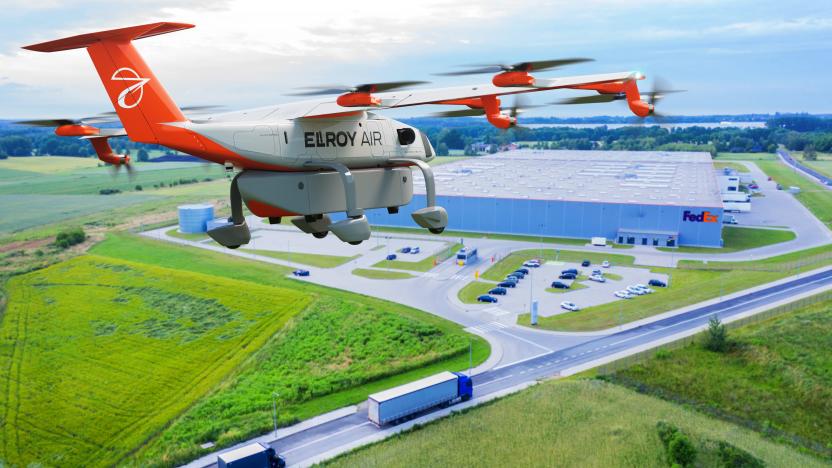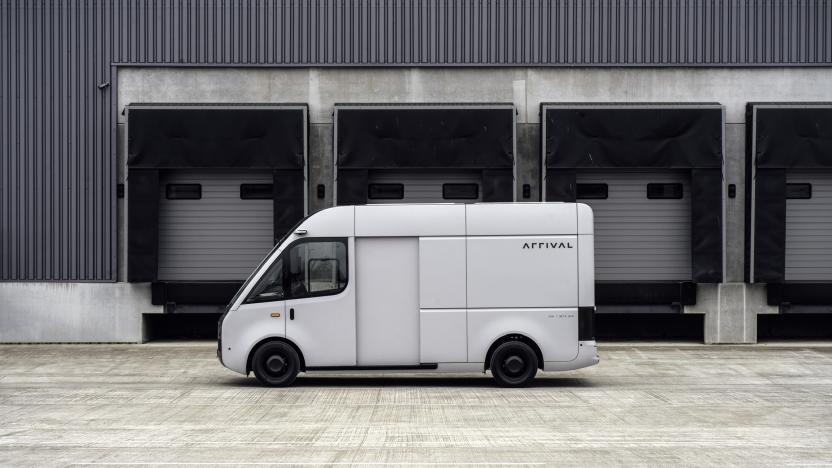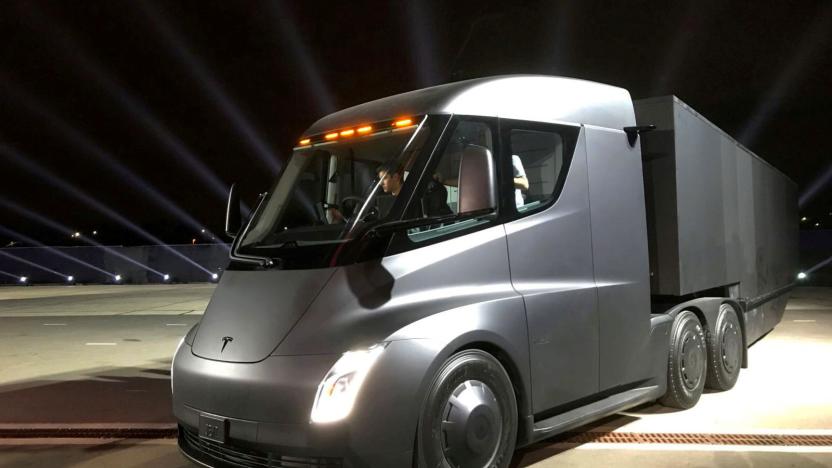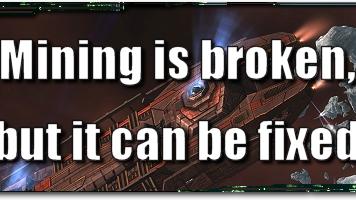logistics
Latest

Agility Robotics is building its first bipedal robot factory in Oregon
Agility Robotics, the maker of humanoid robots, is opening a new manufacturing plant in Oregon that is expected to produce 10,000 "Digits" a year. The warehouse robots are designed to fill a gap in the logistics and distribution industry.

FedEx will test autonomous cargo flights next year
The Chaparral C1 drone will carry up to 500 pounds of packages between depots at a time.

Arrival’s electric van is ready for testing
Arrival's electric cargo van will pop up on streets in the UK and US from this summer.

Volvo Trucks’ autonomous vehicle is hauling goods in Sweden
Volvo Trucks' autonomous vehicle Vera is ready to hit the road. In collaboration with ferry and logistics company DFDS, Vera will begin transporting goods between a logistics center and a port terminal in Gothenburg, Sweden. The vehicle will haul shipping containers along a predefined route, including a stretch of public roads.

Boston Dynamics' acquisition will help its robots see in 3D
While Boston Dynamics' robots make for fascinating -- sometimes disturbing -- internet videos, they haven't quite crossed into everyday life. That could change sooner rather than later. Boston Dynamics took a big step toward bringing its box-moving (and running, jumping, dishwashing) robots into the real world with its acquisition of Kinema Systems.

Walmart will test Tesla Semi trucks for transporting merchandise
The Tesla Semi already has one very large guinea pig for an electric fleet: Walmart. The retail juggernaut has some 6,000 trucks and moves merchandise all over the country and as of last May, it was the world's largest retailer. The company eyeing EVs for logistics sends a pretty clear message about the viability of the tech's commercial applications. And Walmart isn't the only company interested in Tesla's truck. According to Bloomberg, trucking logistics company J.B. Hunt and grocery chain Meijer have also reserved multiple Semis.

Amazon Launchpad helps startups get products to customers
If you're an inventor, then your expertise probably lies in developing hardware and software rather than knowing the ins-and-outs of the logistics business. Amazon is hoping to help these individuals with Launchpad, a system that lets startups harness the company's vast marketing and transportation resources. Essentially, if you run a venture capital-backed startup or have made a splash on Indiegogo, then you can send Amazon a box of devices and Jeff Bezos will take care of the rest. For instance, Launchpad will be one of the first places that you can buy Thync's mood-changing wearable and Eero's distributed WiFi hardware.

EVE Evolved: Mining is broken, but it can be fixed
Mining has a reputation for being the most boring activity in EVE Online, but it's always filled a niche role as a low-effort way to make ISK and play with friends casually. When there's no PvP going on and you can't give your full attention to smashing NPCs in missions or anomalies, mining fills that downtime with something more lucrative and social than spinning your ship in a station. The problem is that mining has slowly become obsolete over the years; alternative mineral sources now supply much of the market's needs, and the risk of flying a defenseless barge just isn't worth the mediocre payout. It's currently more efficient for an individual to buy minerals with ISK made via some other form of PvE, such as level 4 missions or incursions. And on the macroscopic level, such huge quantities of minerals hit the market from alternative sources such as reprocessing loot that the economy could potentially function with no miners at all. CCP has tried to make mining more appealing over the years with buffs and new ships, and the devs recently announced plans to nerf mineral compression as part of a campaign to make mining worthwhile, but I think it'll take a lot more than ISK to get people mining again. In this week's EVE Evolved, I look at how mining and reprocessing are at odds and suggest some ideas for new mining features that could revitalise this long forgotten profession.

The logistics behind transporting millions of iPhones from China to stores worldwide
Apple yesterday announced that its fleet of next-gen iPhones will hit store shelves on September 20. For most people, this means that they simply have to lace up their shoes and head on over to their local Apple retail store pick one up. For Apple, it means that they have nine days to ensure that millions of iPhones emanating from China will ready for purchase at storefronts worldwide. It's a logistical exercise on the grandest of scales, especially considering that Apple routinely sells millions of new devices during launch weekend. Bloomberg today published an fascinating article detailing the innumerable procedures that make up this incredibly complex operation that, when all goes according to plan, stays hidden from public view. The process starts in China, where pallets of iPhones are moved from factories in unmarked containers accompanied by a security detail. The containers are then loaded onto trucks and shipped via pre-bought airfreight space, including on old Russian military transports. The journey ends in stores where the world's biggest technology company makes constant adjustments based on demand, said people who have worked on Apple's logistics and asked not to be identified because the process is secret. The report relays that many of Apple's current practices were "built up" under the watchful eye of Tim Cook who for many years served as Apple's COO and dutifully implemented measures to make Apple the smooth and efficient machine it is today. As for shipping iPhones worldwide, Apple actually begins that process before they are unveiled to the public, moving large shipments of iPhones to distribution centers around the world. Naturally, these shipments are steadily monitored by security guards at all times, "from truck depots, airports, customs and storage warehouses until the product is finally unveiled." While shipping finished products across the globe is one thing, there's another aspect to the logistics machine that isn't often discussed, namely getting all of a device's components together so that the assembly process can begin. The logistics for a new gadget start months before it is unveiled, said the people with knowledge of the process. Apple first coordinates flights and trucks to move components from suppliers to assembly plants in China. Teams from sales, marketing, operations and finance collaborate to forecast how many devices the company expects to sell, said the people. When it comes to shipping iPhones to the US, Bloomberg reports that Apple employs FedEx to carry its precious cargo from China to Memphis, Tenn., where the company is headquartered. As a point of interest, the Boeing 777s FedEx uses cost "about US$242,000 to charter" and can accommodate 450,000 iPhones. The entire article is worth reading as it provides some fascinating insights into the grandiose, and yet silent, mechanisms that enable Apple to operate so efficiently. Whether it's tweaking internal forecasts regarding how many iPhones need to be produced or adjusting the allocation of handsets based on regional fluctuations in demand, Apple stays atop of even the most minute details to keep things running smoothly.

EVE Evolved: Fitting Caldari cruisers for PvP in Retribution
EVE Online's recent Retribution expansion brought forth a massive PvP revival aimed at new players and veterans alike. The new bounty hunting and flagging mechanics have added huge incentives to PvP and given industrialists a way to get revenge without getting their hands dirty. New players are also finding PvP a lot easier to get into thanks to changes to faction warfare and a complete revamp of all the tech 1 cruisers. For the past few weeks, I've been exploring each race's tech 1 cruisers and coming up with new setups you can use in PvP. I've looked at the incredible damage output of the Gallente ships, the impressive tank on the Amarr cruisers, and the still-unmatched speed of Minmatar vessels. In this week's final part of the guide series, I look at the impressive and underrated Caldari cruisers. All of the fittings in this guide series are aimed at older players with at least six months' worth of skill training under their belts, but new players can use them too by swapping all of the tech 2 modules for tech 1 versions. In this week's EVE Evolved, I give PvP setups for the Caldari Caracal, Moa, Blackbird, and Osprey.

EVE Evolved: Player justice in Retribution
This week CCP released a new devblog on upcoming piracy and PvP changes heading to EVE Online with this winter's Retribution expansion. In addition to new ships and an as-yet unrevealed bounty hunter revamp, Retribution completely redesigns the Crimewatch system that decides whom you can legally shoot and stops players from docking or jumping out of the system in the middle of combat. EVE's aggression mechanics are notoriously complicated and buggy, but Retribution aims to simplify the system and put players in the driving seat of criminal justice. The new Crimewatch system not only gets rid of old, undocumented code that was written when dinosaurs roamed the earth but also has far-reaching consequences for pirates, people engaging in PvE and the upcoming bounty hunting revamp. Pirates will now be able to escape into high-security space without police intervention, loot thieves will be subjected to mob justice, nullsec ratters won't be as safe as they think, and neutral remote repairing will be a thing of the past. In this week's EVE Evolved, I delve into Crimewatch 2.0 and how the Retribution expansion will change the game for pirates, ratters, and people engaging in PvP across New Eden.

EVE Evolved: Mining returns with Inferno
Inferno is right around the corner, with the Escalation to Inferno patch due to hit in two days on Tuesday, April 24th. The patch prepares EVE Online for the coming PvP apocalypse with titan balance tweaks, a new interactive status effect bar, and two very important changes to the NPC drop tables: Manufacturable tech 1 modules will be removed from NPC drop tables, and Rogue Drone NPCs will have their mineral drops replaced with ISK bounties. These are changes players have been suggesting for years, and together they have the potential to bring back mining as one of the most profitable professions in EVE. If someone asked you where all the minerals come from to build the thousands of ships destroyed in EVE on a daily basis, you might say that you assume most of it comes from mined ore. Mining was originally the biggest source of minerals in the game and one of the most profitable professions, but over the years, that's changed. When level 4 missions added an infinite source of battleship-sized NPCs to high-security space, mission-running quickly overtook mining as the most profitable profession, and bizarrely, as a very good source of minerals. When the drone regions were later released, ratting there also became a huge mineral faucet far in excess of that produced through mining. In this week's EVE Evolved, I look at the problems faced by mining as a source of minerals and speculate on what will happen to mining as a profession when the Inferno expansion hits.

SOE's Matt Higby talks PlanetSide 2 resources, territory control, and more
PlanetSide Universe and Auraxis Global Network got together with PlanetSide 2 creative director Matt Higby for a two-hour interview session last night. If you missed it, the full video chat is available after the cut below. Higby and the AGN crew covered a lot of territory relating to Sony Online Entertainment's upcoming MMOFPS. Topics included the Engineer class, urban combat, and the territory and resource control systems. Higby also had plenty to say about the general philosophy behind PS2, and how the dev team is focused on refining the gameplay of its predecessor rather than reinventing the wheel. "One of the things that we're trying to do with the game is reduce downtime, reduce a lot of the maintenance things that you had to do that were kind of inconvenient. We're not removing logistics or strategy [...] but trying to lessen those maintenance tasks that are less enjoyable as much as possible," Higby explained.

Officers' Quarters: Solutions to scheduling conflicts
Every Monday, Scott Andrews contributes Officers' Quarters, a column about the ins and outs of guild leadership. He is the author of The Guild Leader's Handbook, available now from No Starch Press. This week's Officers' Quarters doesn't enjoy the same high drama compared to, say, the story from a few weeks ago of a guild leader who took back his guild using a secret alt. However, it's a common issue that often crops up for both officers and non-officers alike: What can you do when your personal schedule suddenly conflicts with your guild's raid times? It may seem hopeless, but it doesn't always have to be! First, the email: So I am at a crossroads. The guild I am currently in as an officer is 6/7 on FL norm. The raid schedule we currently have is a friday/saturday night. Unfortunately though due to real life scheduling soon I will not be able to raid on friday nights. I do not wish to leave this guild that I am currently in. I have 4 level 85s in the guild and I have developed a lot of friendships. I know if my guild leader finds out that i have left the guild she will understand but not be happy. I would like to find a guild who has a more flexible raid schedule, but I don't want to leave the guild I am in and loose my position of officer. I have no idea how to go about this situation. Please help, Much Confusion

Latest EVE dev video talks ship balance and features coming this winter
Several weeks ago, EVE Online developer CCP Games restructured its company and announced a new laser focus on in-space features for EVE Online. Since then we've seen an absolute deluge of news updates and devblogs on features due for release in the winter expansion. In the first two of CCP's new In Development video series, CCP Guard explored the art department and showed off the new nebula effects, EVE's sharpened shadows and the new tier 3 battlecruisers. In the latest In Development video, Guard talks to the EVE feature teams about the absolutely massive list of balance changes and features coming with the winter expansion. CCP Soundwave admits that developers have "probably done more rebalancing in the past month than we have in the past two years," before rattling off an impressive list of changes and new features. Skip past the cut for a brief summary of the changes and to watch the video in HD.

Exploring Apple's supply chain secrets
One of the unsung heroes in the success of Apple over the past ten years or so has been the ability for the company to take control of manufacturing, procurement, and logistics of its products in ways that are completely innovative. In a Bloomberg Businessweek post yesterday, writers Adam Satariano and Peter Burrows did a deep dive into what makes Apple so successful in terms of operations -- an area where Apple CEO Tim Cook excels. According to the article, Apple has "built a closed ecosystem where it exerts control over nearly every piece of the supply chain, from design to retail store. Because of its volume -- and occasional ruthlessness -- Apple gets big discounts on parts, manufacturing capacity, and air freight." The supply-chain management success story apparently began when Steve Jobs returned to Apple in 1997. At that time, most computer manufacturers shipped their products by sea, which was much less expensive but also slower. Jobs wanted to ensure that the translucent blue iMacs that had just been introduced would be available for Christmas 1998, so he had the company pay $50 million to buy up all available holiday air freight space. Companies such as Compaq later tried to book air transport for holiday shipments, only to find that Apple had monopolized the space. Apple's ability to manufacture a product and ship it right to a customer's door began with the iPod era, and an ex-Hewlett Packard exec recalls that an HP staffer bought one and received it a few days later, watching its progress from factory to home on Apple's website. Mike Fawkes, who was the supply-chain chief at HP, recalls that "it was an 'Oh s---' moment." By doing this, Apple was able to avoid keeping large inventories of product on hand Apple also buys up speciality equipment, including customized lasers that are used to poke the almost-invisible holes that are used to emit a green dot of light on many of the company's products, including the MacBook Pro and MacBook Air, as well as the Wireless Keyboard and Magic Trackpad. Those machines cost about $250,000 each, and Apple has bought literally hundreds of them to add a touch to its products that few people may notice. The Bloomberg Businessweek article is a good read, and fascinating for anyone who has an interest in what goes on behind the scenes at Apple.

The Soapbox: Decent challenge
Disclaimer: The Soapbox column is entirely the opinion of this week's writer and does not necessarily reflect the views of Massively as a whole. If you're afraid of opinions other than your own, you might want to skip this column. The ancestors of modern humans had a lot to contend with, but I'm willing to bet that the seeds of MMO gamers existed even in those days. There had to have been at least one person who looked at a wooly mammoth, a titantic mass of tree-trunk limbs and tusks and fur, and announced "I bet you get great loot for killing that thing!" And as it turned out, he was right, assuming "great loot" means "meat for food and fur for clothing." I'm exaggerating, naturally; everyone knows that ancient humanity spoke Norwegian, not English, and it's a well-known fact that the term "loot" was first coined in the Canterbury Tales along with "spawn camper." But that need for a challenge is still there, the central idea that in order to get something really awesome you have to overcome a big obstacle. Which is why challenge is such a thorny issue for MMOs and always has been, because one person's challenge is another person's irritation.

EVE Evolved: Incursion guide -- Fleet setup and tanking
In last week's EVE Evolved, I gave my first impressions of EVE Online's newest group PvE activity based on a cautious first night spent at an incursion in Obray. The Sansha incursions have been running for over a week now, and players have come up with some clearly effective strategies for clearing the sites. Many groups are now tackling the incursions in relative safety, and yet every incursion still sees several ill-prepared fleets decimated at the hands of Sansha's ships. Incursions throw some difficult challenges at players, with focus fire melting vulnerable targets, energy neutralisers and ECM disabling your support ships, and bomber frigates wreaking havoc on large hulls. In some encounters, Sansha's Nation will even use deployable remote repair platforms and other structures to its advantage and will call in random reinforcement waves if your group is too slow. With the right fleet composition and strategy, however, all of those challenges can be overcome with ease. It seems that what players need most right now is a solid guide to tackling incursions. Over the next few editions of the EVE Evolved column, I'll be smashing my way through EVE's incursions to compile a comprehensive guide from the ground up. In this week's first part of the guide, we get the ball rolling with vital information on incursion fleet composition and tanking strategies. This part of the guide is aimed mainly at those interested in Vanguard-level sites, but the fleet setup and tanking strategies described are fundamental to all encounter sizes. In this week's EVE Evolved, I tackle the fundamentals of incursion fleet design and tanking, which should be enough to help your group jump right into 10-man Vanguard encounters.

EVE Evolved: Incursion in progress
In a blaze of fire and glory, Sansha Kuvakei's fleet clashed with players in a major offensive in Yulai. Although his AI-controlled Sansha battleships numbered in the hundreds, the sheer force of capsuleer defense initiatives was brought down on Kuvakei's fleet like a hammer. With the Sansha ships under heavy fire, the fleet opened additional wormholes to call in reinforcements. Amidst the busy buzz of lasers scorching hulls, capsuleers hurling missiles, and CONCORD rescue operations, space itself warped as several massive Sansha supercarriers emerged from the incoming wormholes. Sansha Kuvakei played his biggest and most fearsome card as a show of the incredible forces he now commands. And capsuleers burned them to ashes in defiance. Since the battle in Yulai, Sansha's Nation has begun launching full-scale occupations of constellations across New Eden. Many players dove straight into the fray without adequate preparation, and Sansha's forces were not forgiving. While most NPC pirate ships found in EVE Online are weak with a very basic AI, the new Sansha ships are both smart and deadly. They use everything from ECM and energy neutralisers to stealth bomber technology and logistic support. Thousands of player ships were destroyed in the first day of fighting as people worked out, through a system of trial and error, how best to tackle EVE's latest supervillain. As the dust settled, I began to get a solid impression of how well the feature is working and whether it really is the breath of fresh air EVE's PvE has been sorely lacking all these years. In this week's EVE Evolved, I give my first impressions of the Sansha incursions in an attempt to demystify some of the discussion surrounding them and share some basic tips for getting involved.

Federal Excess: FedEx introduces liquid nitrogen-cooled biotech shipping, we can envision other uses
Just think about this the next time a FedEx van comes speeding past you -- that four-wheeled transporter could be carrying containers equipped with liquid nitrogen cooling that keeps its innards at a chilly -150 degrees Celsius. Don't worry, though, says FedEx, the use of dry vapor is actually safer than the currently used dry ice and classifies this new methodology as non-hazardous. While we may like to poke fun, it sounds like a pretty legitimate boon for healthcare and biotechnology shipments, which can now be maintained at a deeply frozen temperature for up to 10 days at a time. FedEx will provide the self-sufficient container and collect it upon delivery of the goods, while also monitoring its condition during transit. No word on whether or when DiGiorno will be signing up for the service. [Thanks, Pavel]









